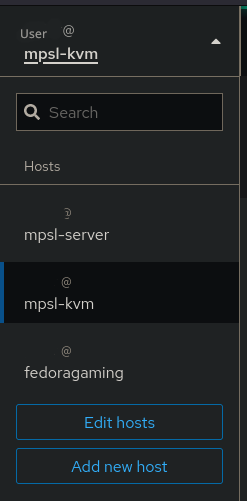I have a couple of home server, both with Proxmox as hypervisor, one VM with Ubuntu 22.04 that does just Docker containers, one with Open Media Vault, one with Home Assistant (HA OS) and a couple of Windows VM to do some tests. Since I wanted to move from OMV, right now I see 2 options:
- stay with Proxmox and find another NAS OS
- use Unraid as NAS and hypervisor
What other option would you suggest?
I use proxmox with truenas scale. It’s a great option, but you just have to make sure to pass the hdd controller PCI device through to the VM. This can either be the SATA controller on the motherboard if you can make that work, or a separate PCIe HBA.
Should I pass the whole controller? I have the Proxmox disk on the same controller, how do I do that?
You would need a separate controller.
Ouch…got it. Thanks
The LSI 9210 8i - IT mode is a great option and can be had for under $50.
On eBay they all seems to be coming from China at about 30$ with cables (although they are the 8087 and not 8086), could they be clone? In Europe (where I live) they costs about 60€.
Does it works with SATA drives and, most important: can it provides the single drives to the OS without RAID (since I would want to use a software RADI like RIADz)?
Yeah, so the IT mode flash makes it just a JBOD controller, which is what truenas wants. It works with SAS and SATA. You’d need SFF-8086 to SATA cables. (One cable per 4 drives)
Interesting, I’ll have a look on how to flash the IT mode. Thanks!
Running a Debian Bookworm hypervisor using KVM/QEMU with virt-manager for vms + Incus for lxc containers gives you a lot of freedom with how you use it.
edit: It also means you build your own hypervisor from parts - kinda like installing postfix/dovecot/mariadb/spamassassin instead of a packaged solution like mail-in-a-box. It takes more time and effort but I find I understand the underlying technologies better afterwards.
That’s something I like, just plain Debian with KVM. How is virt-manager compared to the Proxmox UI? Does it needs to be installed on a separate PC (Windows?)?
No problem running virt-manager on the hypervisor itself. You can also use https://cockpit-project.org with the cockpit-virtual-machines addon to manage kvm vms from https://machineip:9090
Cool! I think that I’ll give it a go! Does the cockpit needs to be installed directly on the host OS or…?
Yeah, you need to install cockpit on any linux you wanna manage using it, then you can use the ssh keys to setup so your cockpit session on the hypervisor gives you access to your vms too.

While you can do a lot of the stuff that PM does via Unraid and other tools, it’s all there in one spot. I love taking snapshots before upgrades, migrating machines between nodes live while I upgrade the nodes, having HA for my OPNsense and other important boxes, and the PBS backup system. I know you could do all this with other tools, but it’s damn convenient in PM and “just works”.
You can install a NAS vm in PM, just give it raw access to the disks you’re looking to use for data, and back them up independently. Don’t try to do something like overlay ZFS on ZFS.
Yeah I experimented with Truenas in a VM, it randomly dropped the pool. Do not do this.
For the hypervisor I recommend either Proxmox or XCP-ng. XCP-ng is technically a better hypervisor, but I personally use Proxmox because I like the UI.
For the NAS OS, I use and recommend TrueNAS Scale. You can run Docker containers on it. All this being said, I’ve never used Unsaid so I don’t know how they compare.
Out of curiosity, why move from OMV? I was thinking about trying it out for a second NAS.
Out of curiosity, why move from OMV? I was thinking about trying it out for a second NAS.It’s probably a problem of not dedicating enough time to learn how it works, but I’ve installed a couple of time in the past years, but…I don’t like it much. It seems complicated to me (still, I probably don’t dedicate it enough time).
For the NAS OS, I use and recommend TrueNAS Scale. You can run Docker containers on itI’ll check it, thanks
Your reason to move from OMV is the same as mine for XCP-ng. It is supposed to be a better hypervisor, but I just did not like the UI at all. It doesn’t help that you have to host a small VM just to have a webGUI.
I had to build that small VM from source on a different machine because my XCP-ng install was refusing to set it up. Then I was able to move it over to the XCP-ng machine to self host.
I liked the UI and honestly I like the VM that keeps the web app separate from the hypervisor. But then it started looking like a massive pain to hotplug USB devices to the VMs, so I bounced.
I am trying Incus/LXD right now and enjoying it so far.
Debian as OS; LCX/LXD/Incus for containers and VMs. BTRFS as filesystem. More: https://lemmy.world/comment/6507871
What do you mean with
LXD/LXD? Edit: Oh, I got it: LXD/LXC, I’m reading the post you’ve linkedMy bad, typo.





